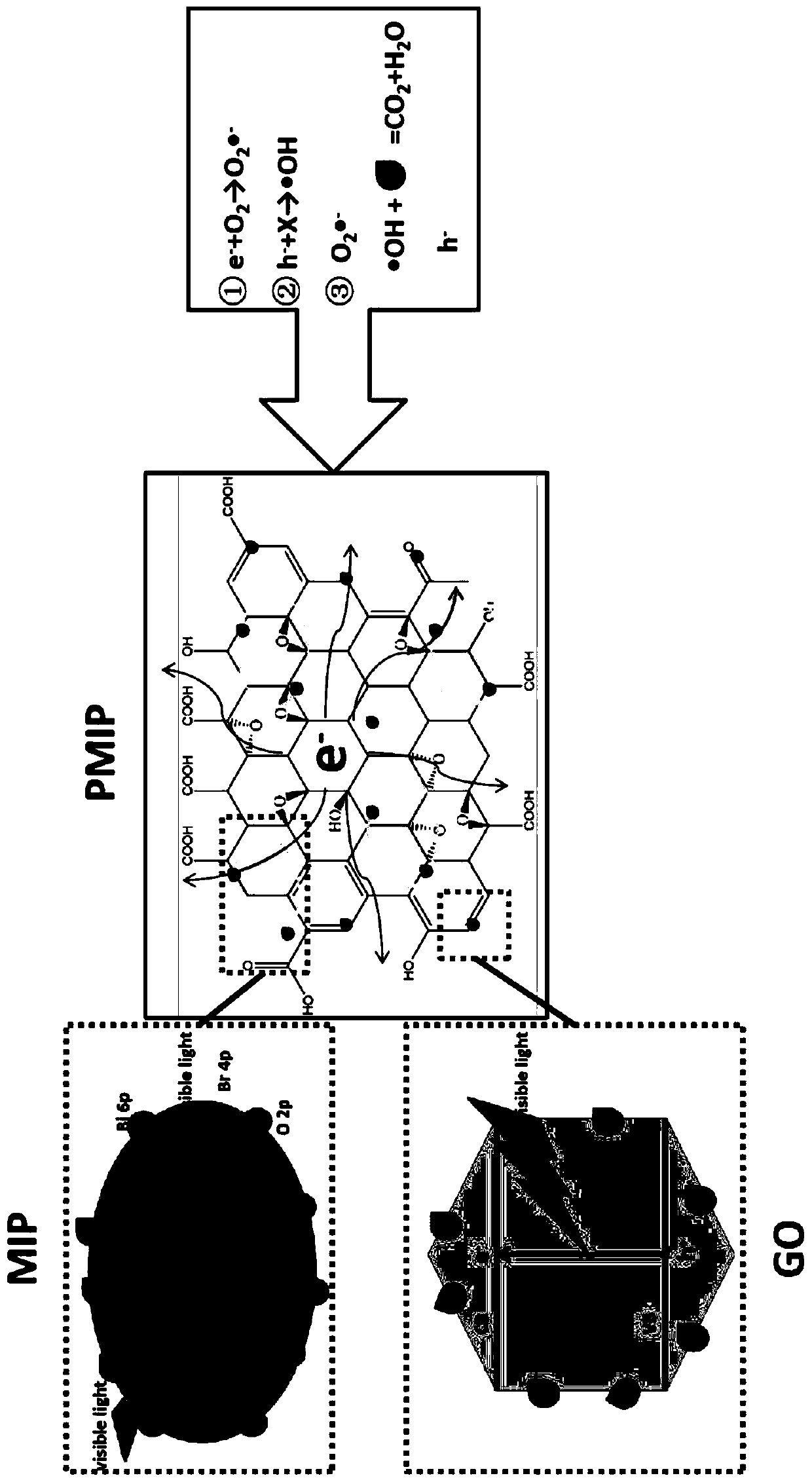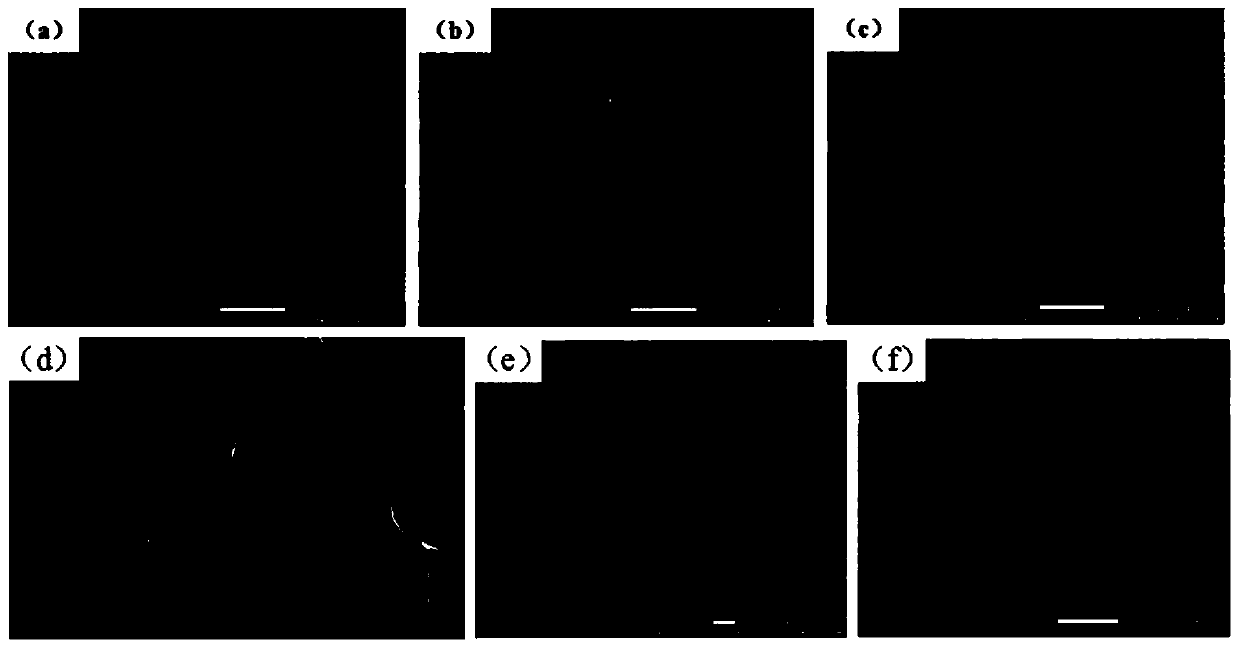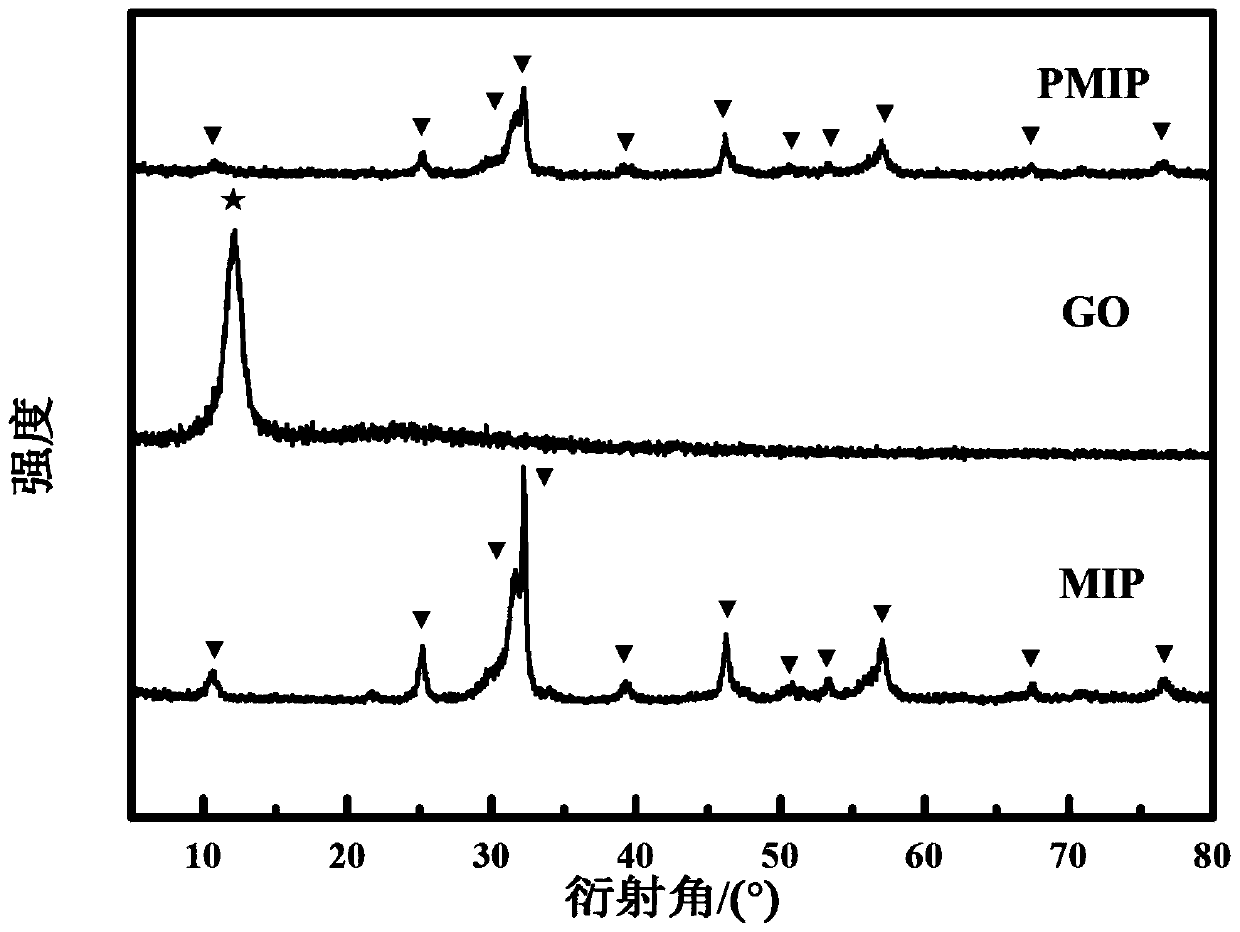Graphene oxide/molecularly imprinted composite material, and preparation method and application thereof
A technology of molecular imprinting and composite materials, applied in the field of organic pollutant degradation, can solve problems such as degradation restriction
- Summary
- Abstract
- Description
- Claims
- Application Information
AI Technical Summary
Problems solved by technology
Method used
Image
Examples
preparation example Construction
[0047] The invention provides a preparation method of graphene oxide / molecularly imprinted composite material, comprising the following steps:
[0048] Mix template molecules, functional monomers and porogens for prepolymerization to obtain prepolymers;
[0049] Mixing the prepolymer, the first crosslinking agent, the initiator and BiOBr, and performing a polymerization reaction under protective atmosphere conditions to obtain the first polymer;
[0050] eluting the first polymer to obtain a molecularly imprinted polymer;
[0051] The molecularly imprinted polymer, graphene oxide, solvent and a second crosslinking agent are mixed for a crosslinking reaction to obtain a graphene oxide / molecularly imprinted composite material.
[0052] In the present invention, unless otherwise specified, all raw material components are commercially available products well known to those skilled in the art.
[0053] The invention mixes the template molecule, the functional monomer and the poro...
Embodiment 1
[0084] (1) Preparation of bismuth oxybromide (BiOBr):
[0085] 1mol Bi(NO 3 ) 3 Mix with 20mL ethylene glycol solution, and ultrasonically disperse for 30min under the condition of 400W to make Bi(NO 3 ) 3 Completely dissolved, Bi(NO 3 ) 3 Solution; mix 1mol CTAB and 20mL ethylene glycol solution, and ultrasonically disperse for 30min under the condition of 400W to completely dissolve CTAB to obtain CTAB solution;
[0086] The CTAB solution was added dropwise to the Bi(NO 3 )3 solution, stirred at room temperature for 2 h to mix thoroughly, placed the resulting mixed reaction solution in a stainless steel reactor with a polytetrafluoroethylene liner, and reacted at 160 ° C for 16 h. After the reaction was completed, it was naturally cooled to room temperature. Wash with ionic water and absolute ethanol for 3 times, vacuum-dry at 80°C for 12 hours, and pulverize in a mortar to obtain BiOBr (particle size 2-3.5 μm);
[0087] (2) Preparation of Molecularly Imprinted Polyme...
Embodiment 2
[0100] The graphene oxide / molecularly imprinted composite material was prepared according to the preparation method of Example 1, and the difference from Example 1 was that the amount of graphene oxide in step (4) was 0.17g respectively, and the obtained graphene oxide / molecularly imprinted composite material The loading of graphene oxide in the medium is 5%.
PUM
| Property | Measurement | Unit |
|---|---|---|
| specific surface area | aaaaa | aaaaa |
| pore size | aaaaa | aaaaa |
| particle diameter | aaaaa | aaaaa |
Abstract
Description
Claims
Application Information
 Login to View More
Login to View More - R&D
- Intellectual Property
- Life Sciences
- Materials
- Tech Scout
- Unparalleled Data Quality
- Higher Quality Content
- 60% Fewer Hallucinations
Browse by: Latest US Patents, China's latest patents, Technical Efficacy Thesaurus, Application Domain, Technology Topic, Popular Technical Reports.
© 2025 PatSnap. All rights reserved.Legal|Privacy policy|Modern Slavery Act Transparency Statement|Sitemap|About US| Contact US: help@patsnap.com



